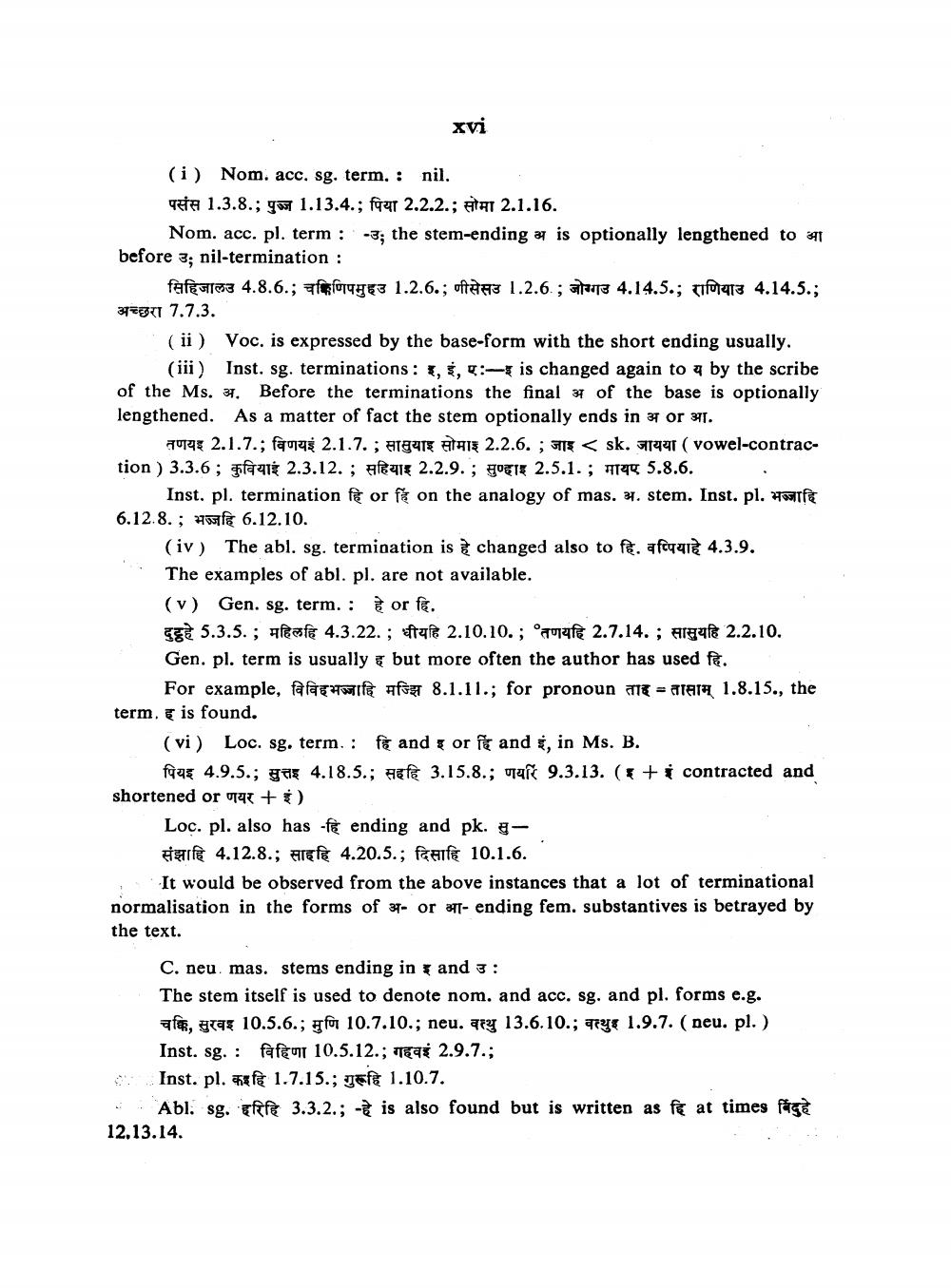________________
xvi
(i) Nom. acc. sg. term. : nil. TEA 1.3.8.; y 1.13.4.; foar 2.2.2.; FAT 2.1.16.
Nom. acc. pl. term : -3; the stem-ending an is optionally lengthened to s before 3; nil-termination :
fafegile3 4.8.6.; lefag 3 1.2.6.; ofta a3 1.2.6.; 13:13 4.14.5.; tiforats 4.14.5.; 377351 7.7.3.
(ii) Voc. is expressed by the base-form with the short ending usually.
(iii) Inst. sg. terminations: 1,$,:- is changed again to q by the scribe of the Ms. 34. Before the terminations the final 37 of the base is optionally lengthened. As a matter of fact the stem optionally ends in 3 or 31.
10798 2.1.7.; faves 2.1.7. ; Atgart #11 2.2.6. ; 51 < sk. arg9 ( vowel-contraction ) 3.3.6; gaat 2.3.12.; Real 2.2.9. ; JOTI 2.5.1. ; AC 5.8.6.
Inst. pl. termination for fo on the analogy of mas. . stem. Inst. pl. Half 6.12.8.; Hofe 6.12.10.
(iv) The abl. sg. termination is changed also to ff. afure 4.3.9. The examples of abl. pl. are not available. (v) Gen. sg. term. : or fe.
E 5.3.5.; SE 4.3.22. ; f e 2.10.10.; ° 9 2.7.14. ; Argas 2.2.10. Gen. pl. term is usually but more often the author has used fe.
For example, fà la chwife after 8.1.11.; for pronoun = DIATH 1.8.15., the term. & is found.
(vi) Loc. sg. term. : fe and or fe and s, in Ms. B.
faqe 4.9.5.; 578 4.18.5.; HP 3.15.8.; yaf 9.3.13. (< + contracted and shortened or 074 + )
Loc. pl. also has -f ending and pk. - PIE 4.12.8.; Arefe 4.20.5.; falfe 10.1.6.
It would be observed from the above instances that a lot of terminational normalisation in the forms of 3t- or off- ending fem. substantives is betrayed by the text.
C. neu, mas. stems ending in and 3 : The stem itself is used to denote nom. and acc. sg. and pl. forms e.g. afek, arak 10.5.6.; ufo 10.7.10.; neu. aty 13.6.10.; y 1.9.7. (neu. pl.) Inst. sg. : fafen 10.5.12.; real 2.9.7.; Inst. pl. af 1.7.15.; jaft 1.10.7.
Abl. sg. eff 3.3.2.; is also found but is written as fe at times face 12.13.14.




